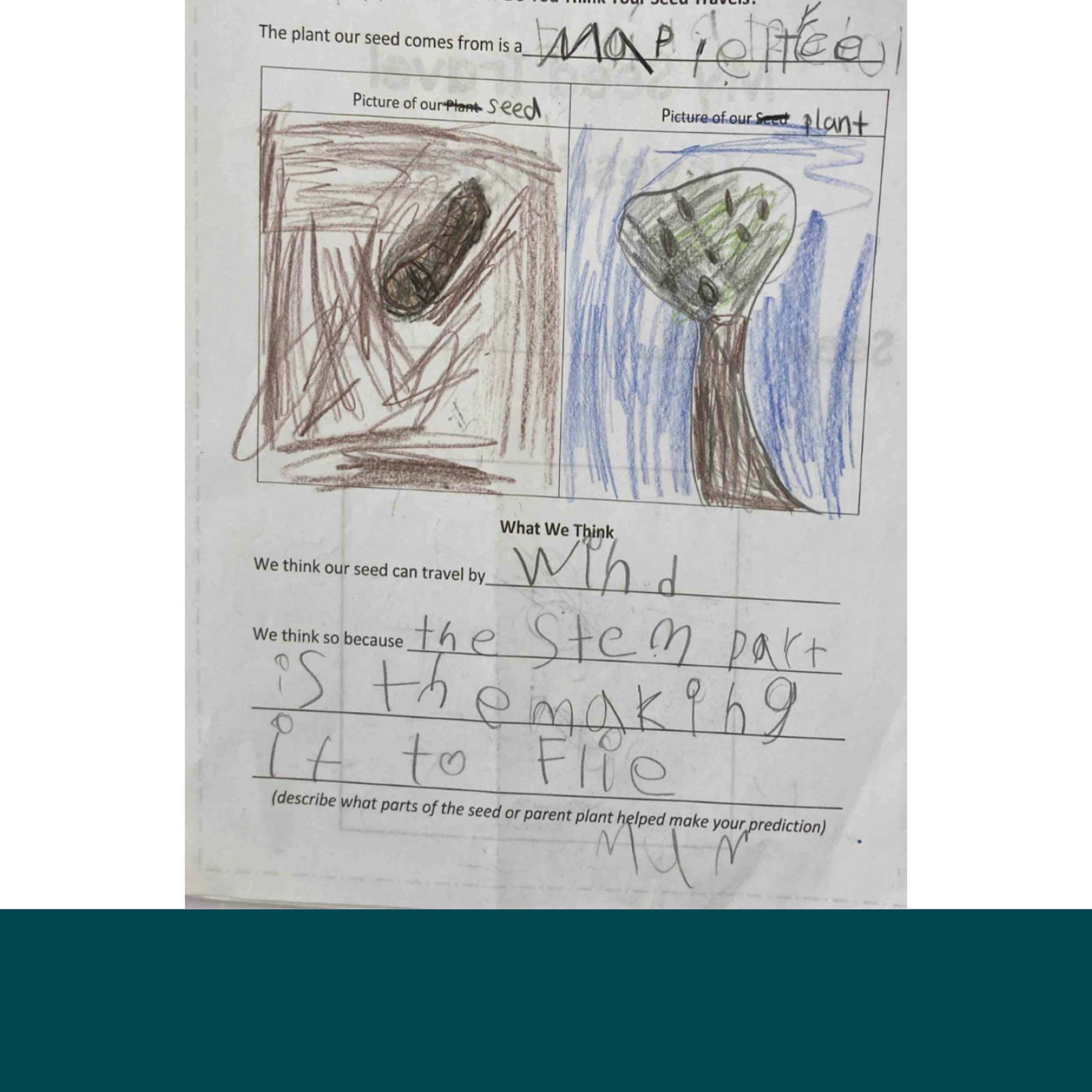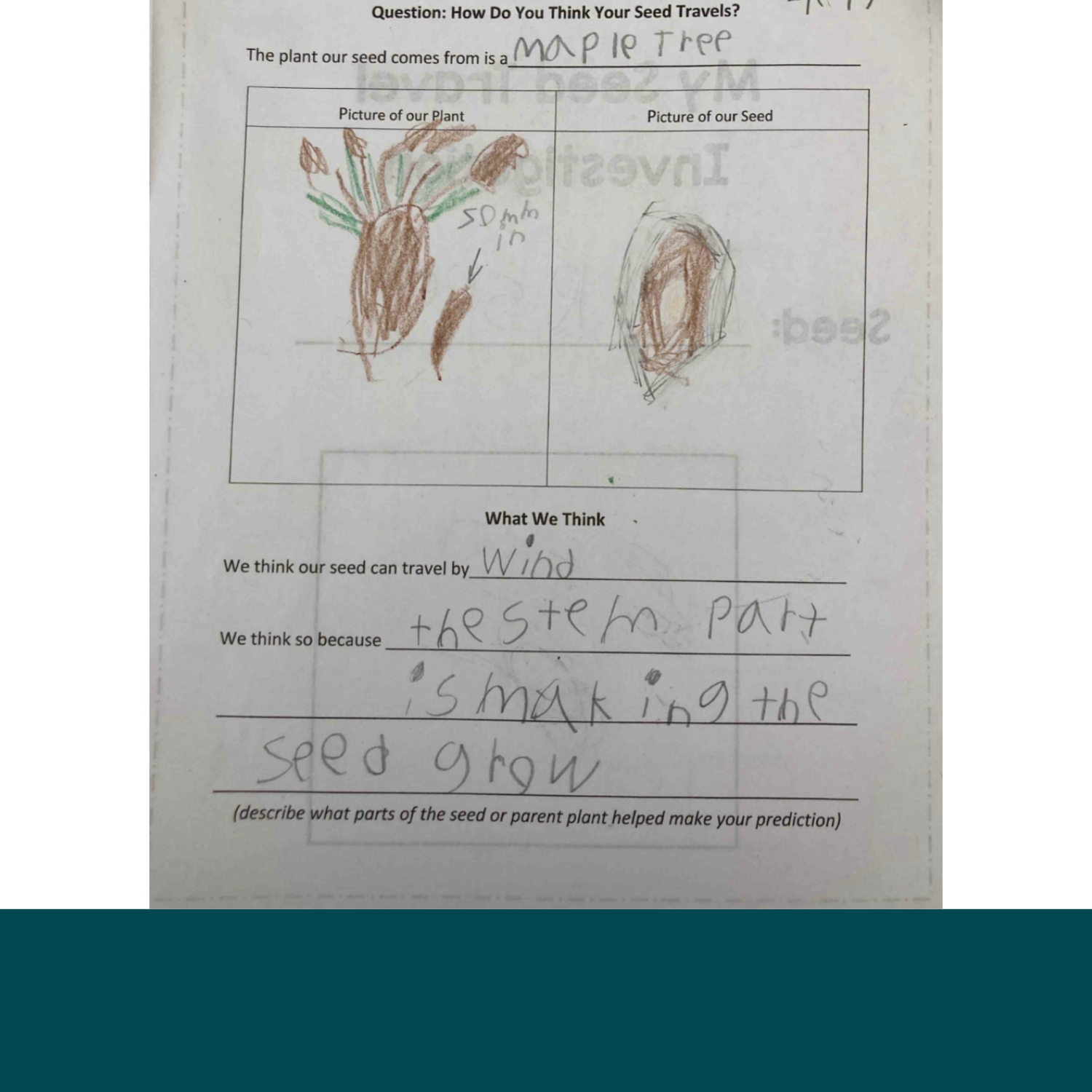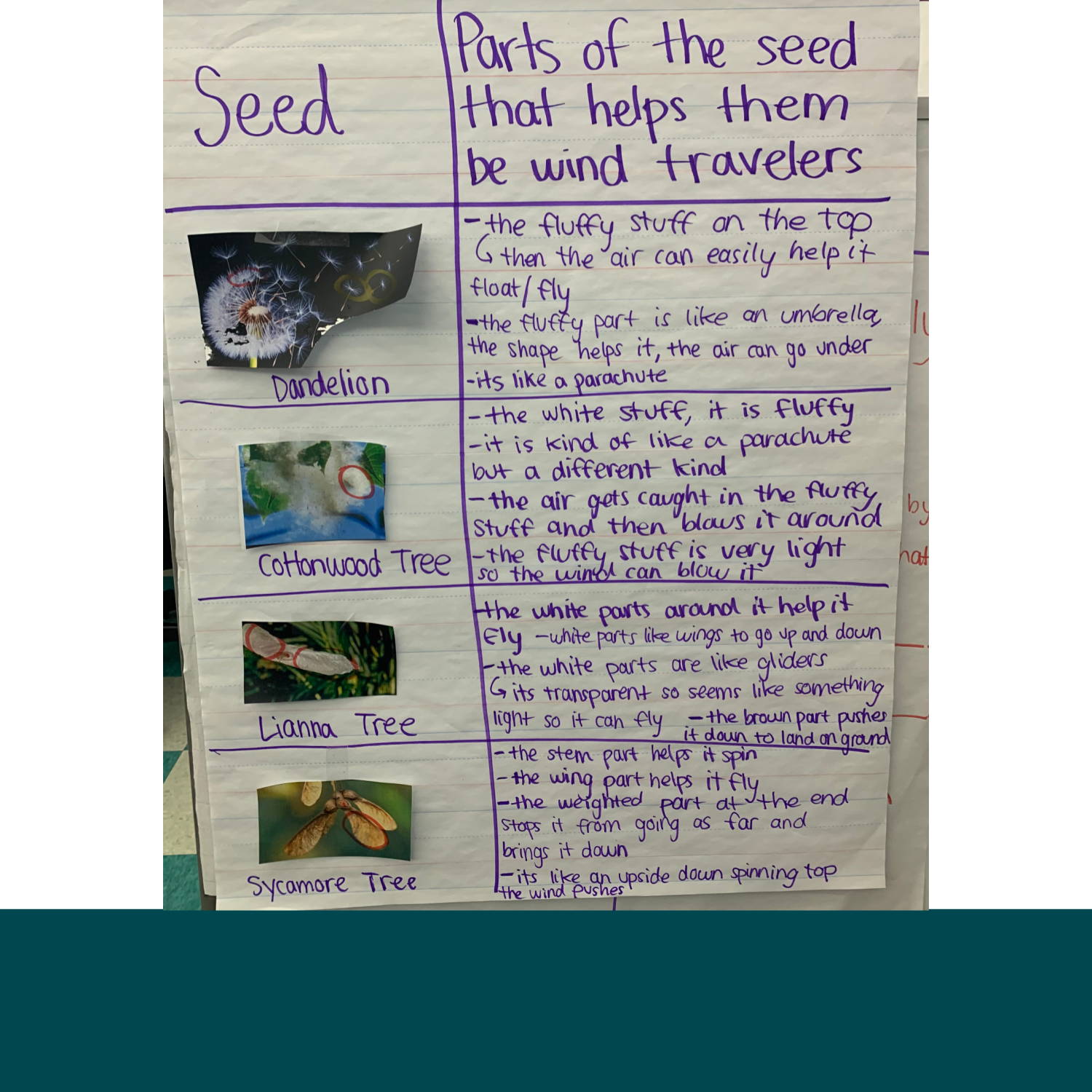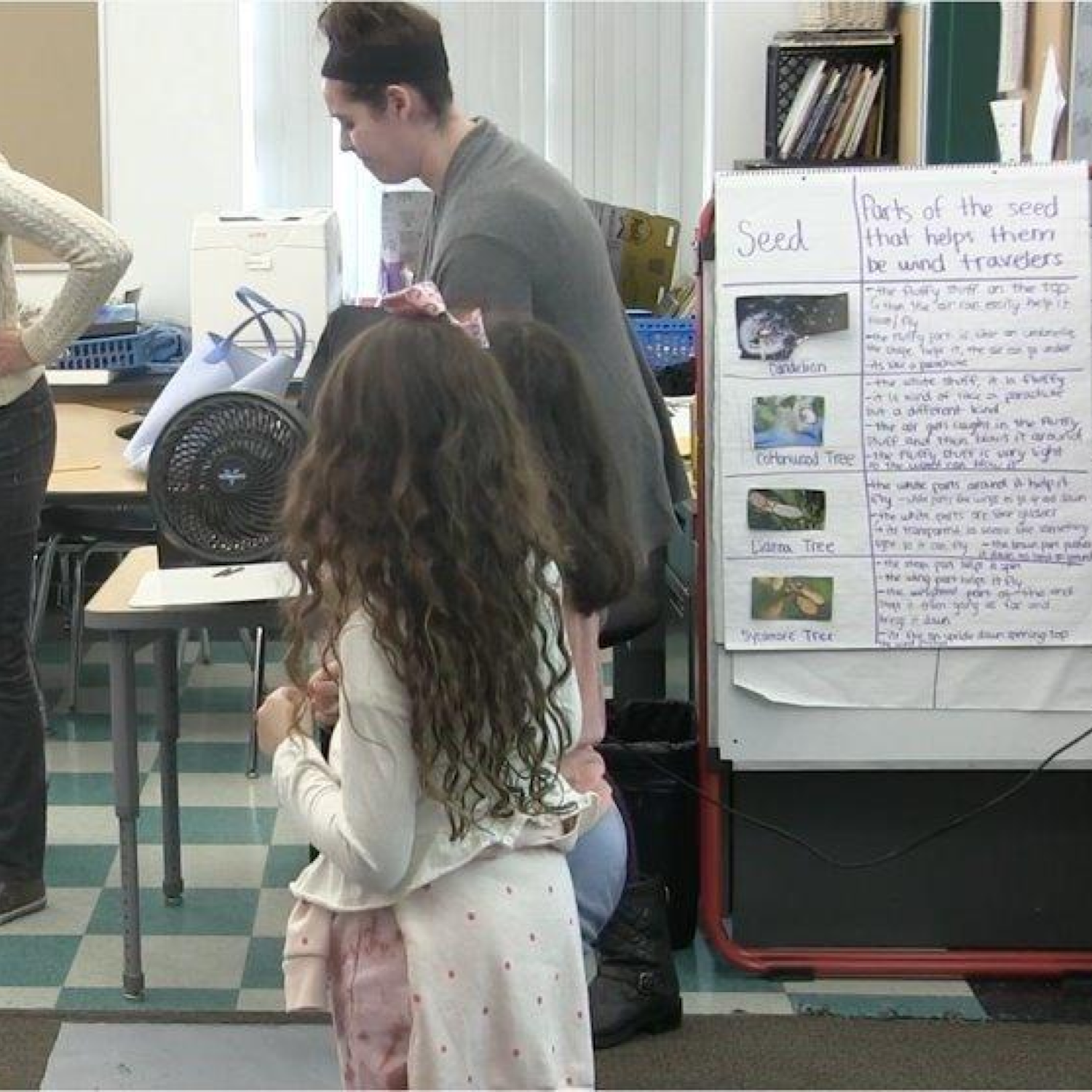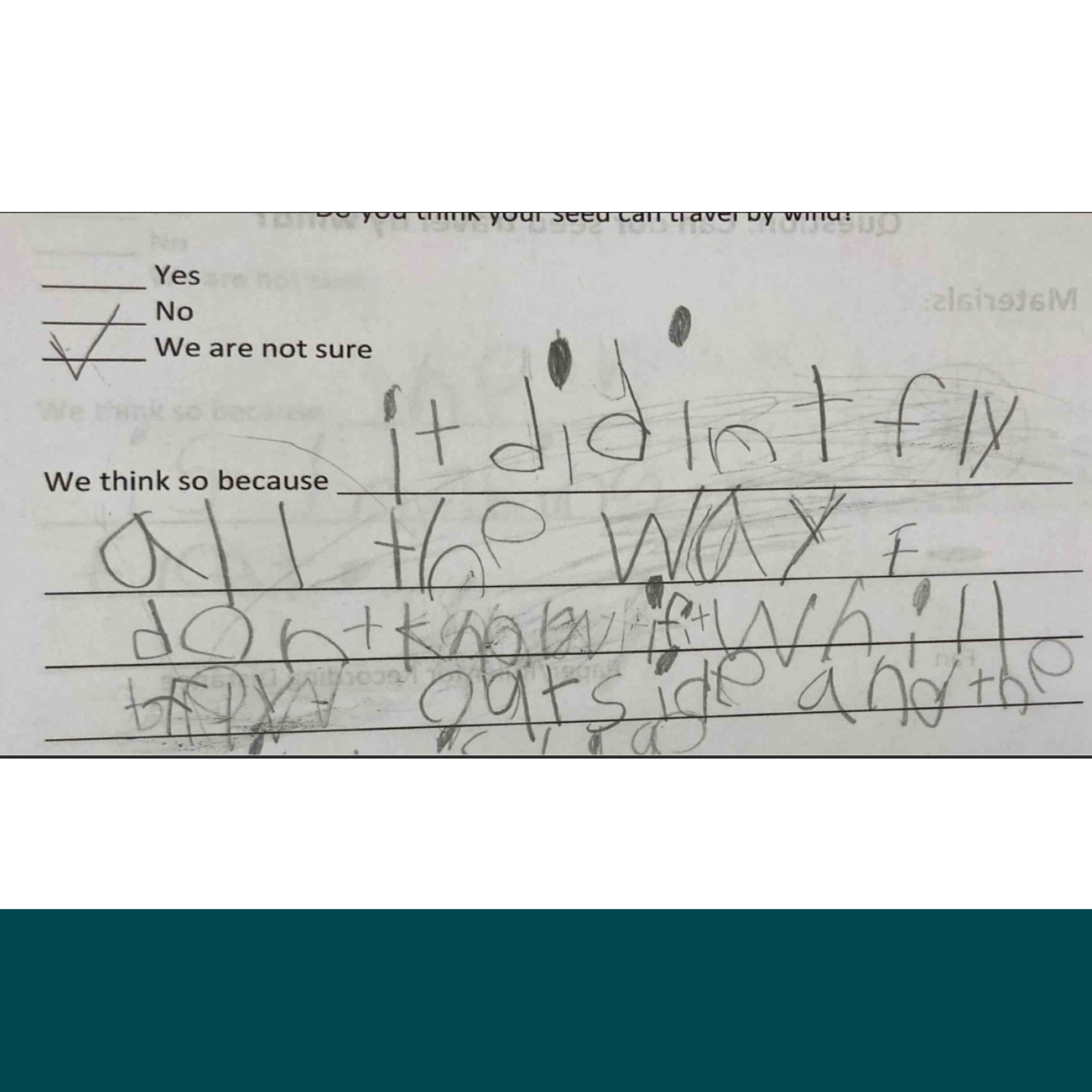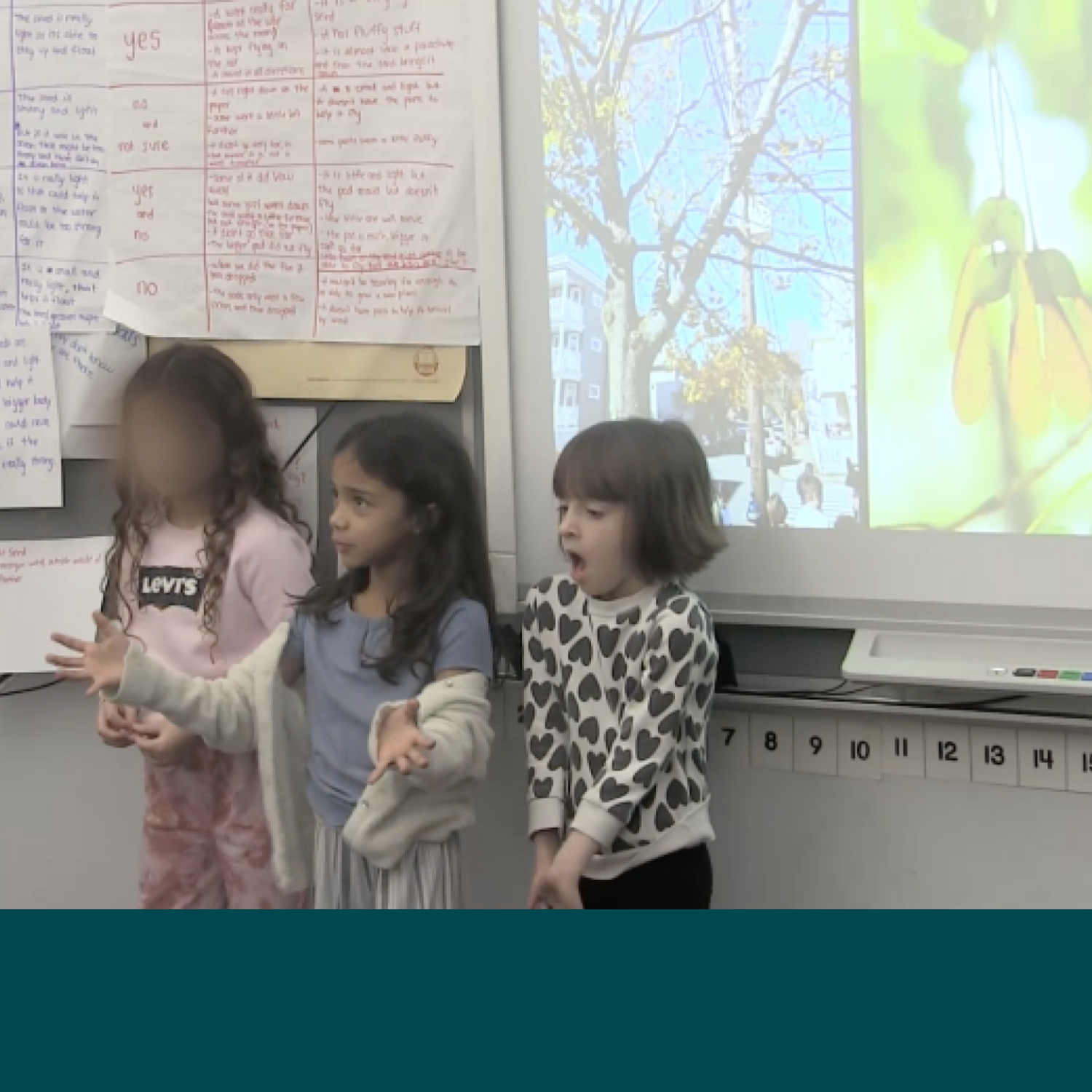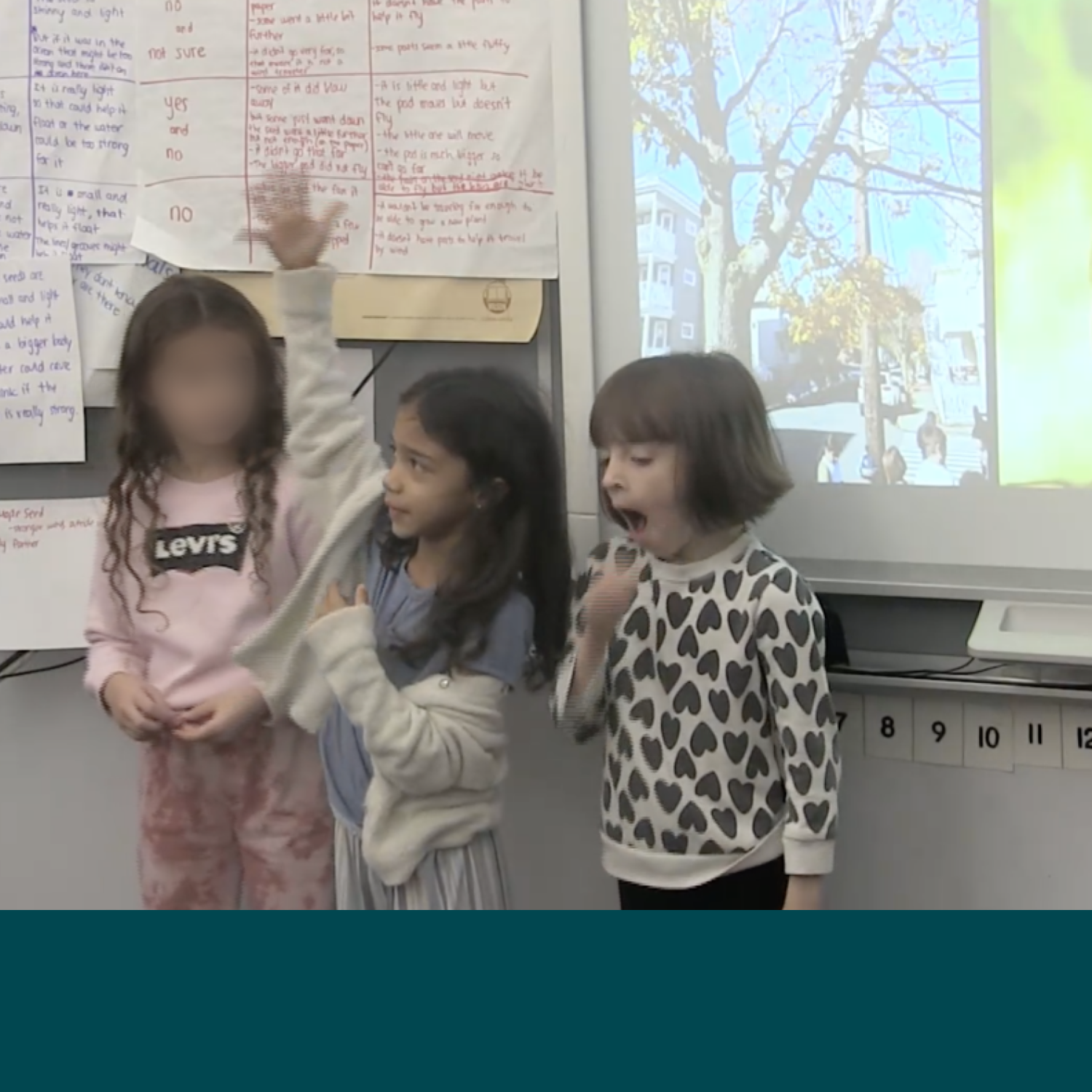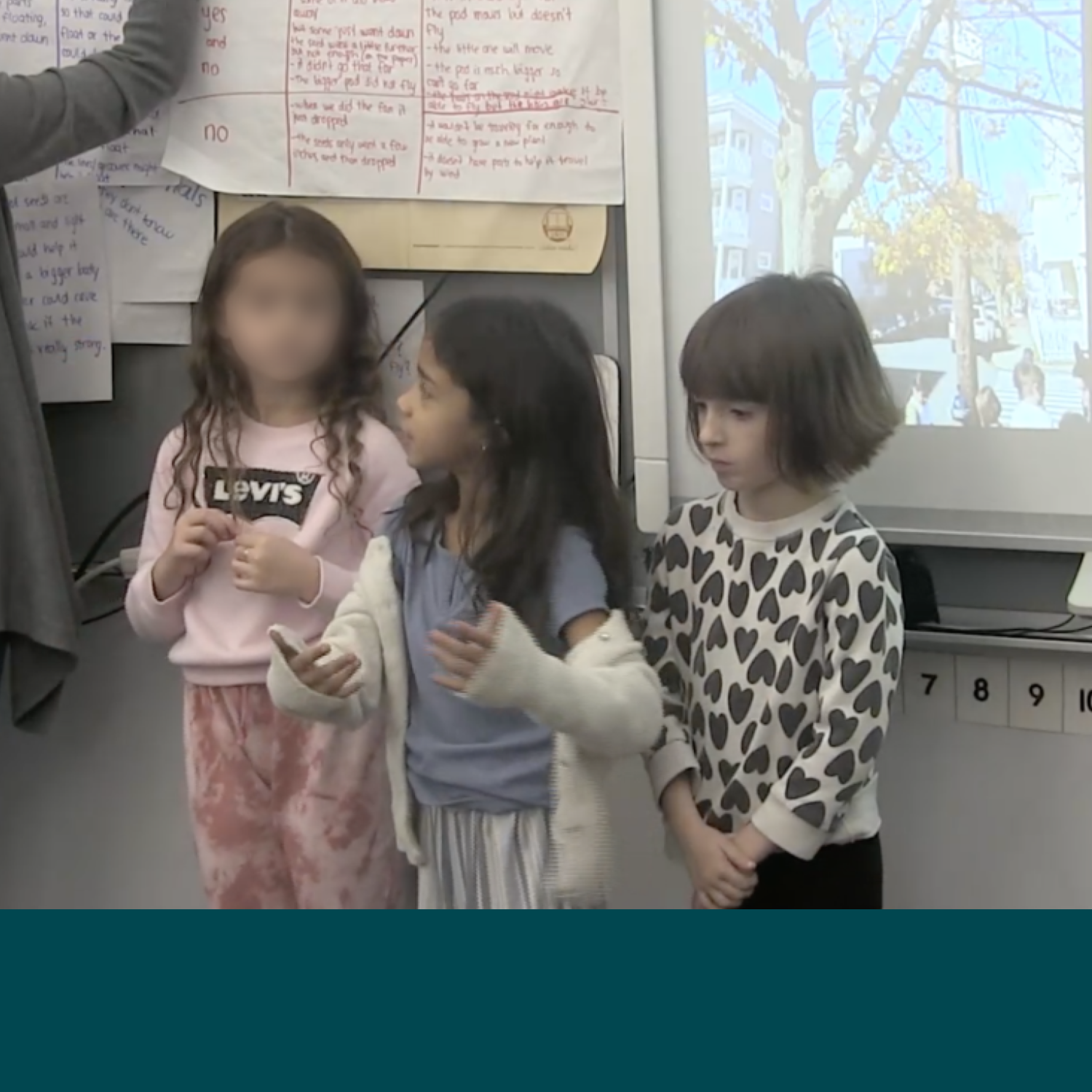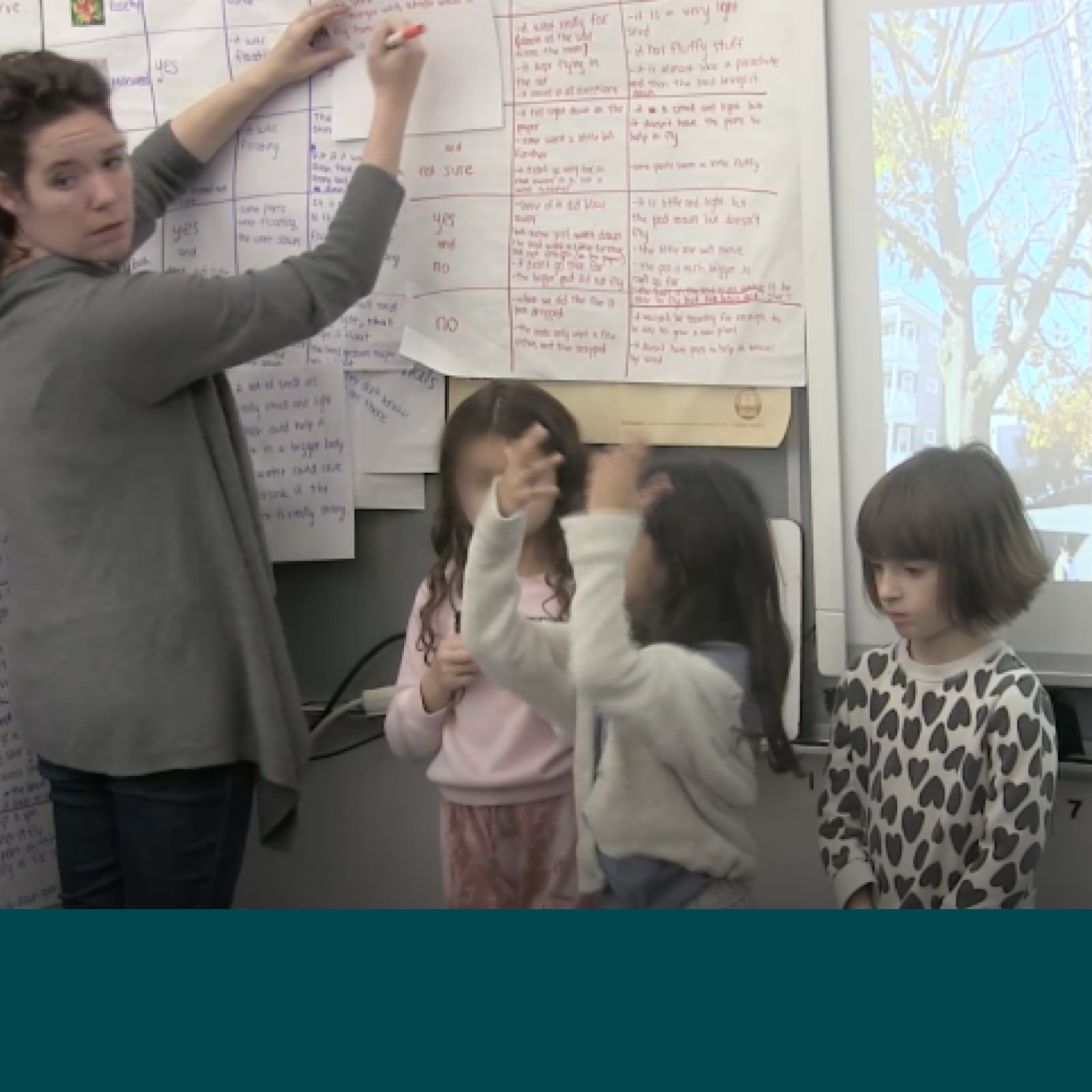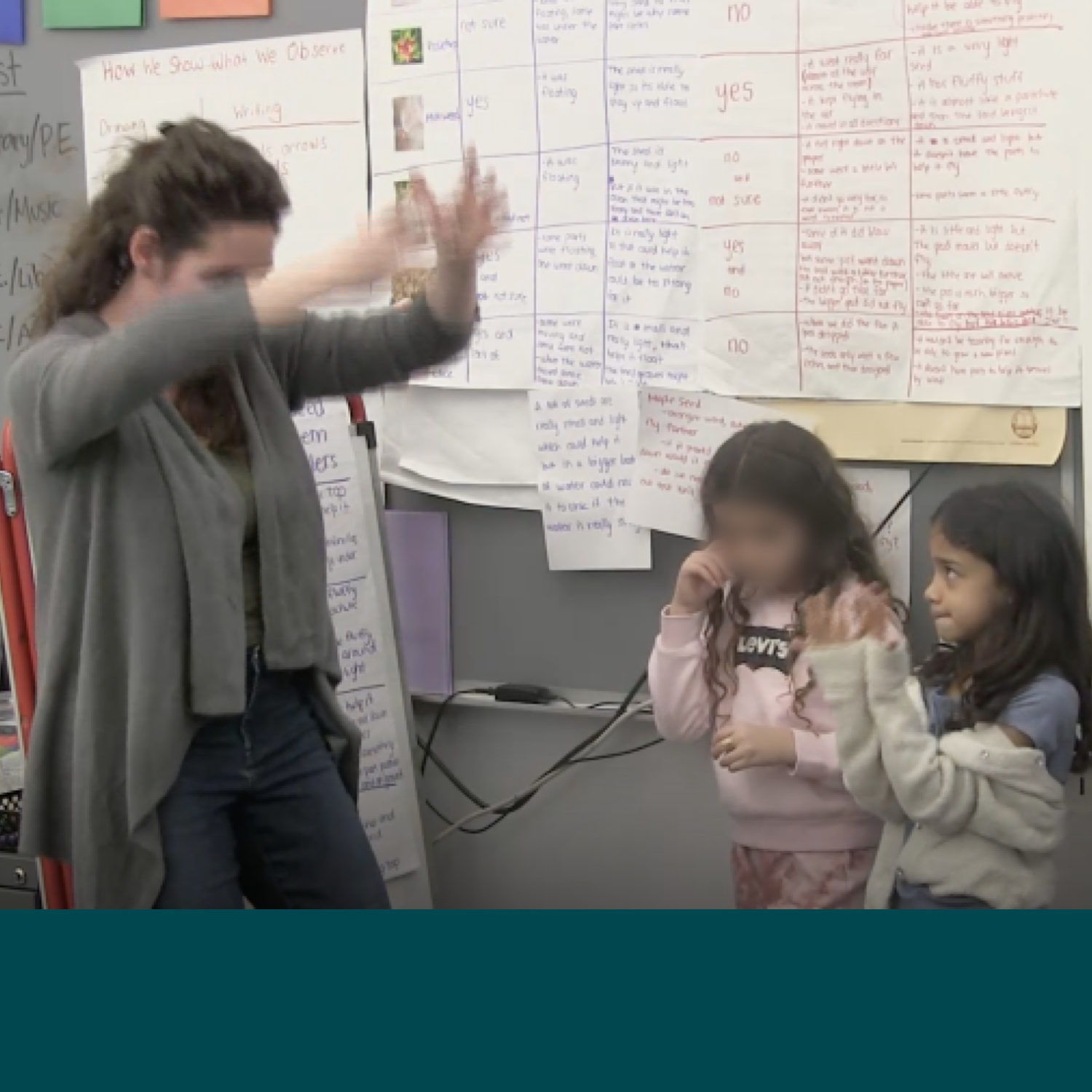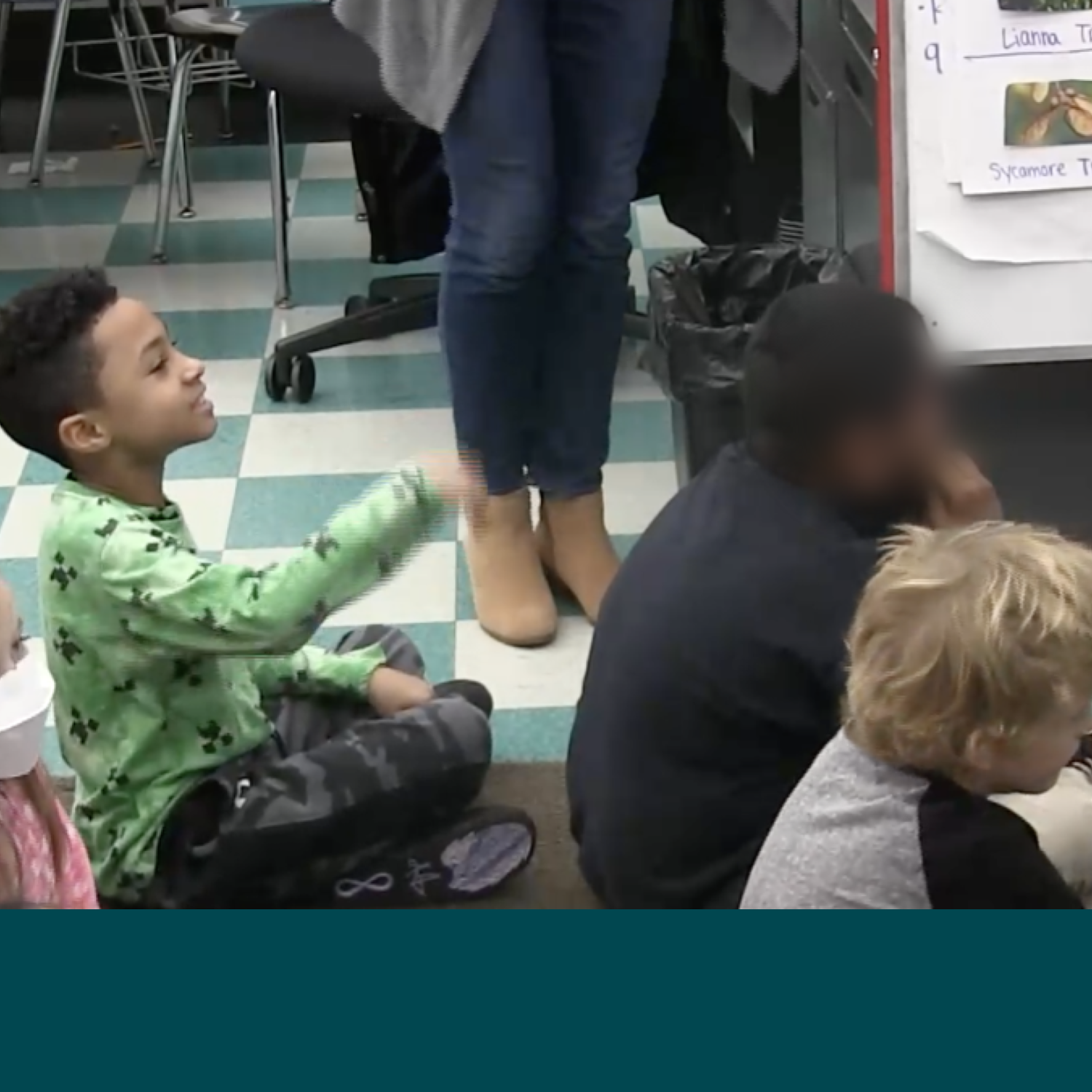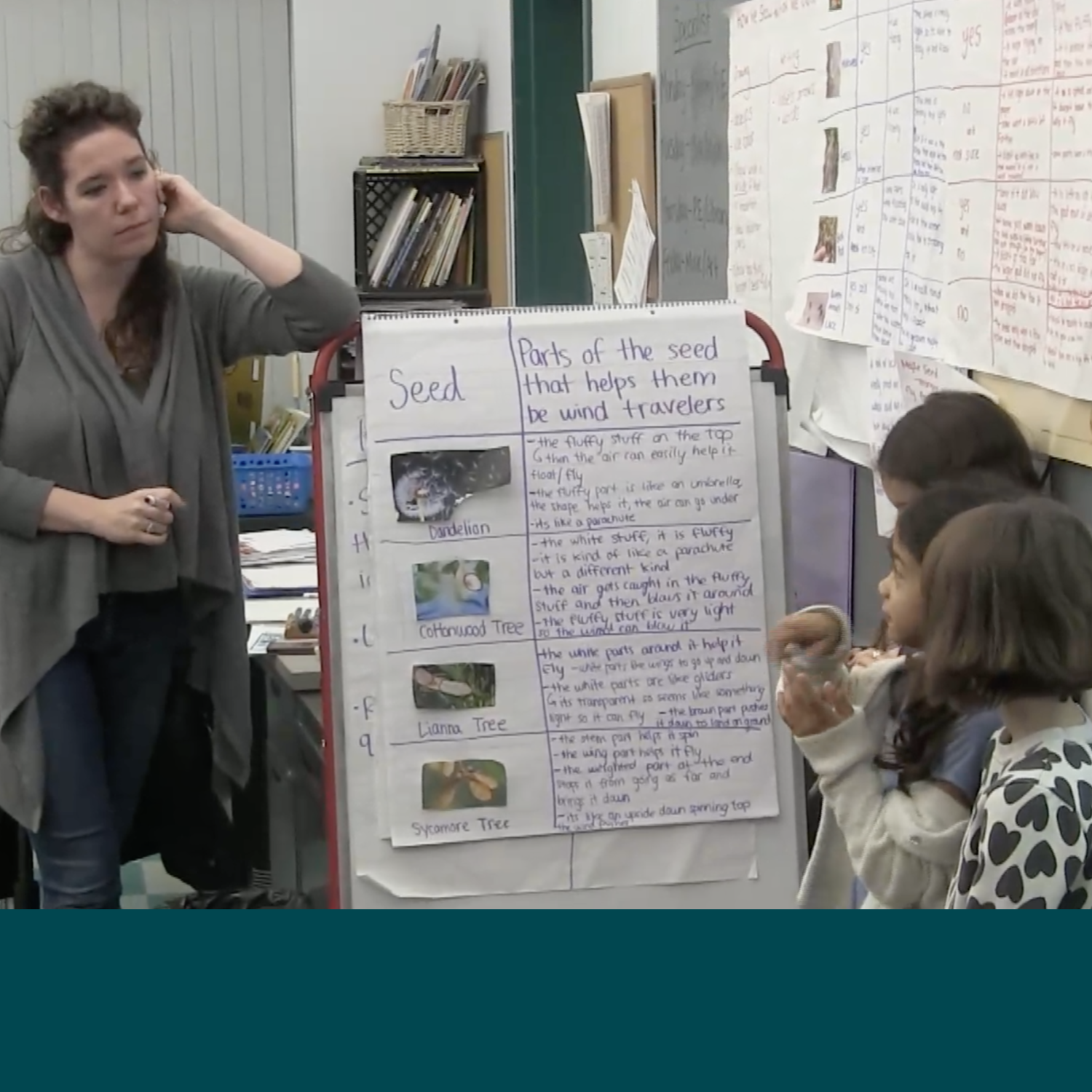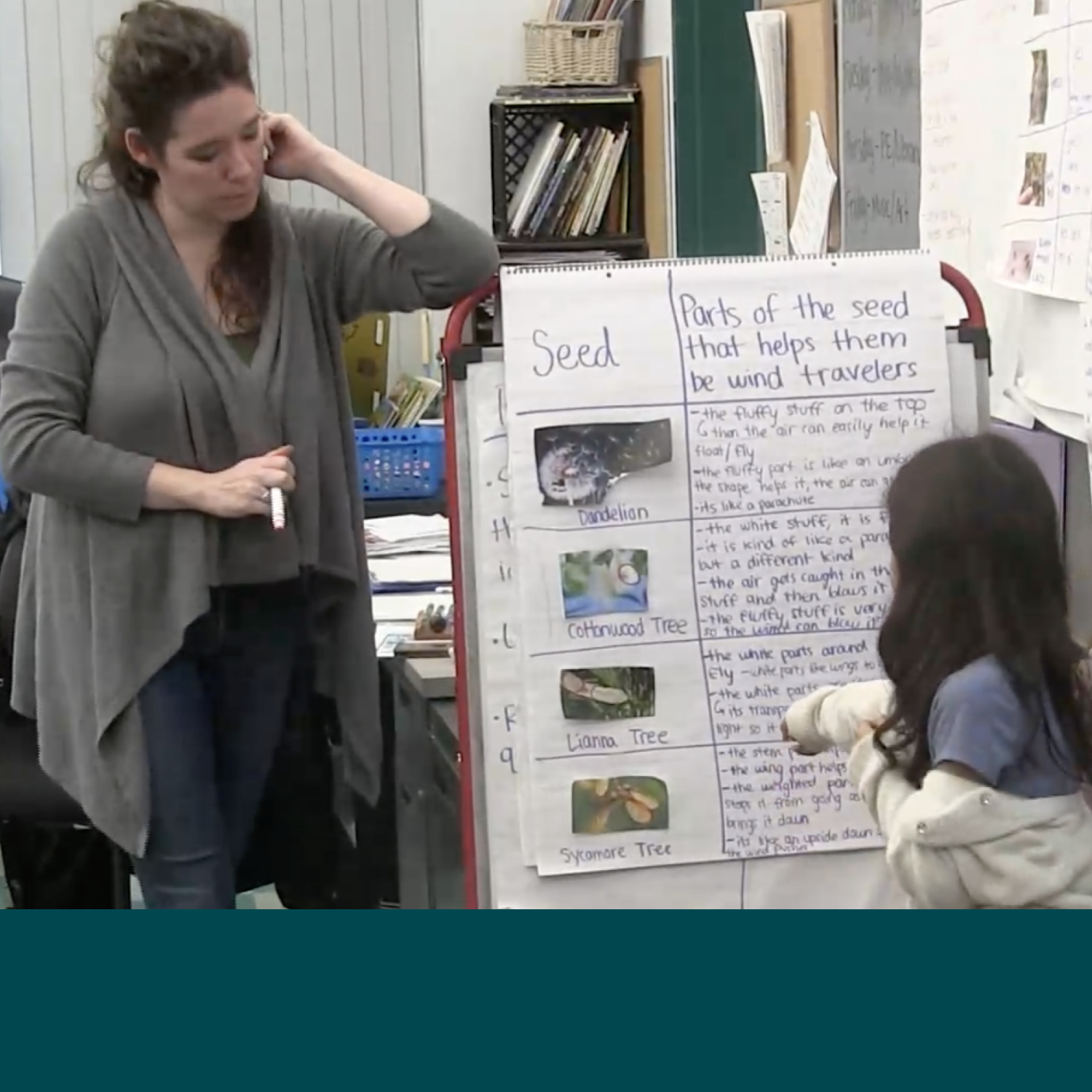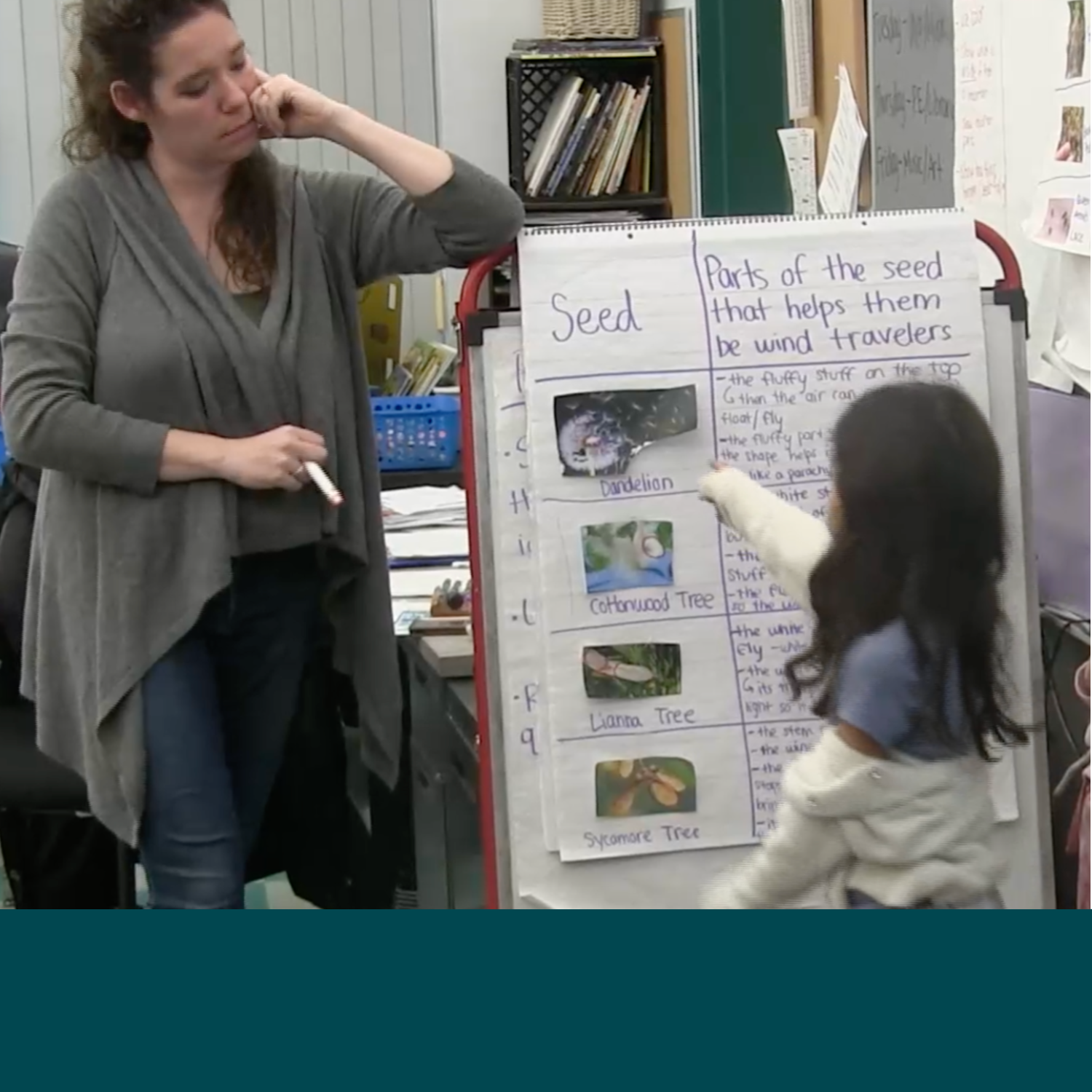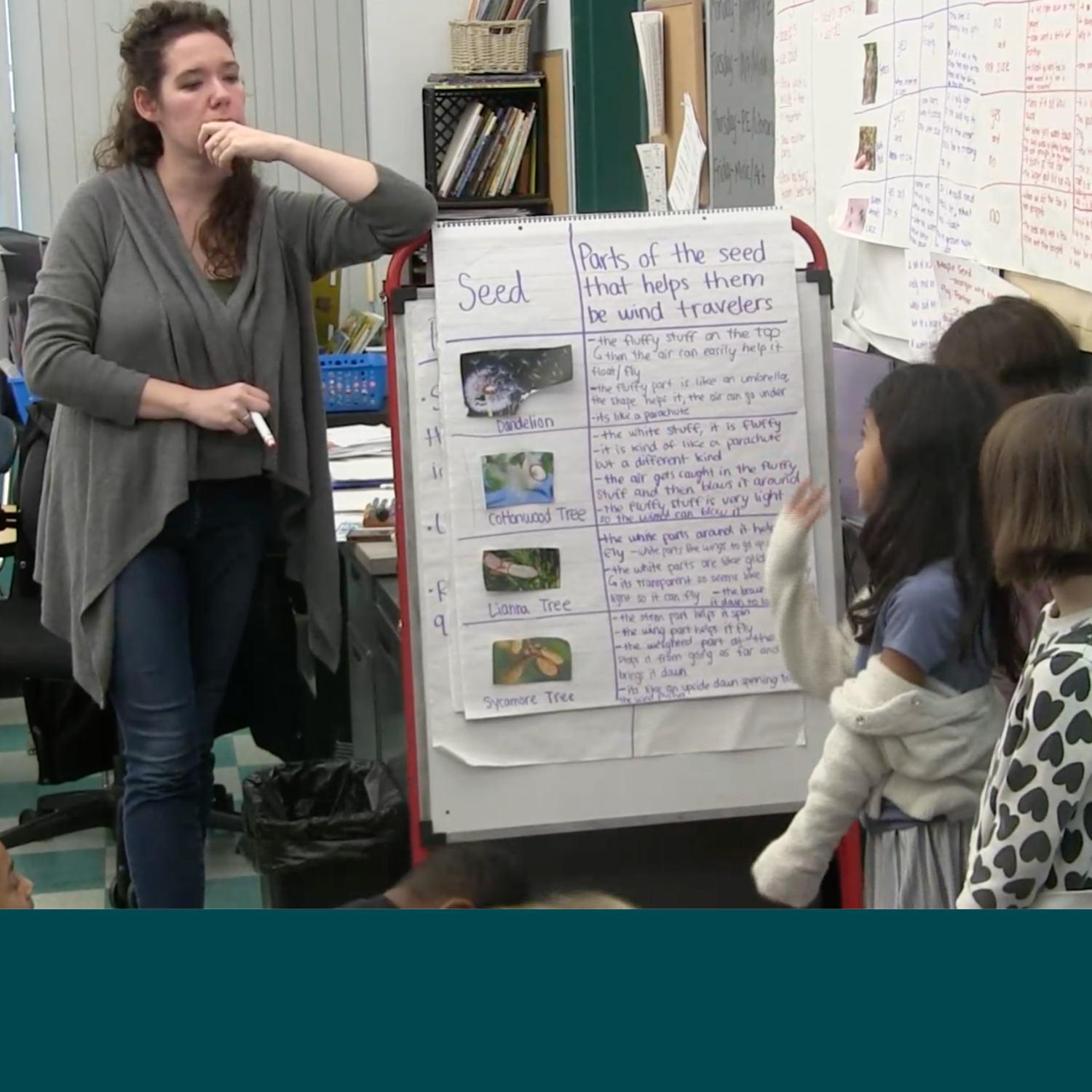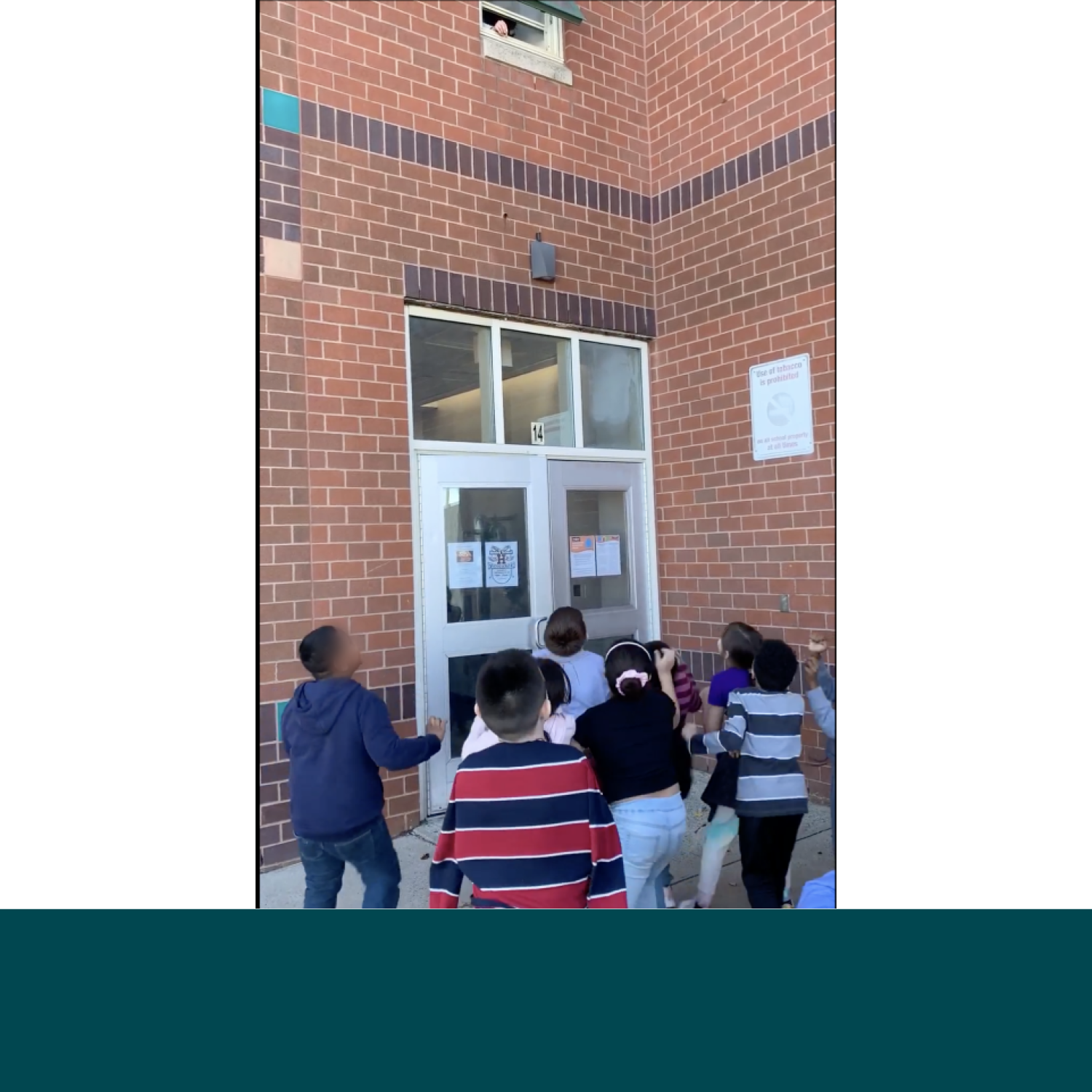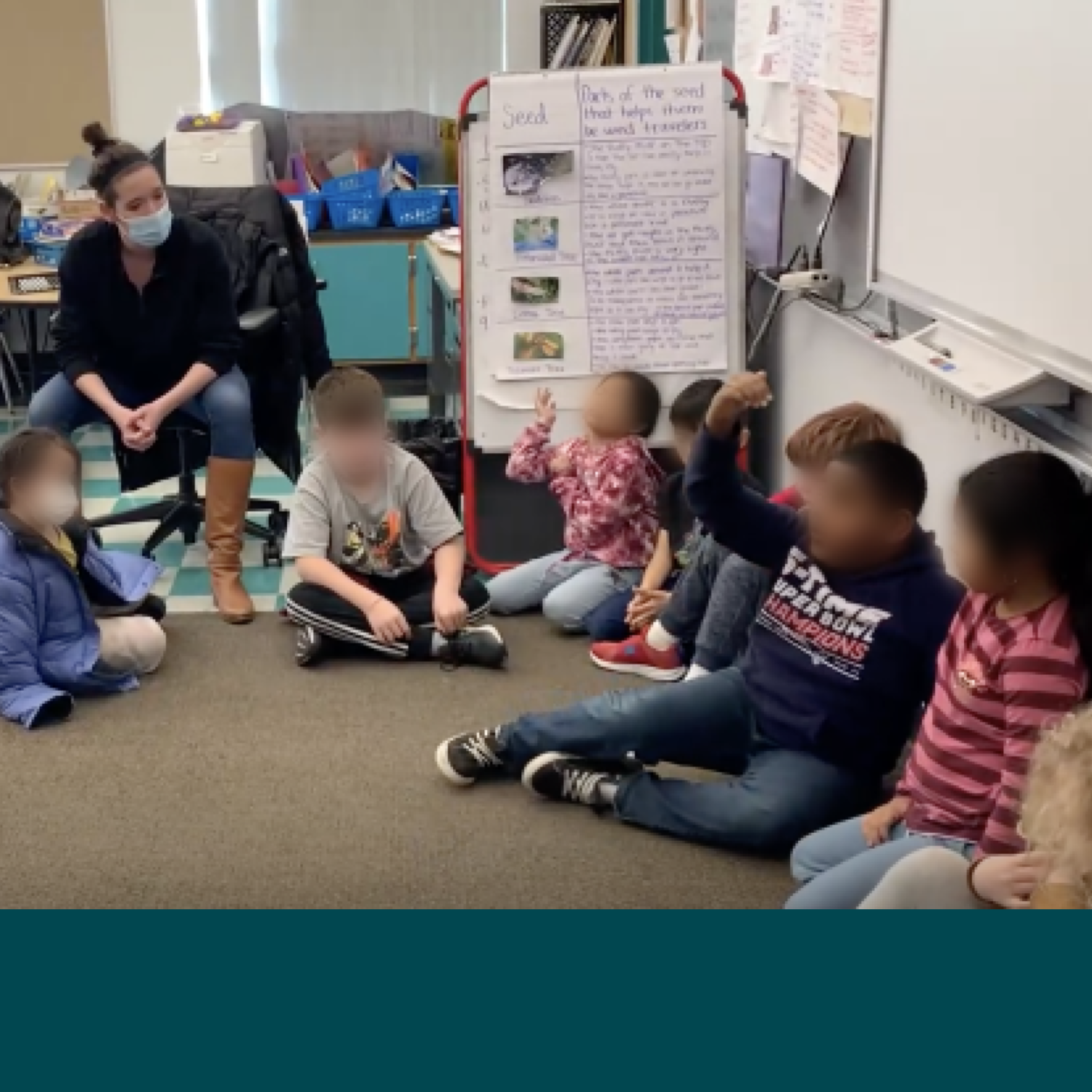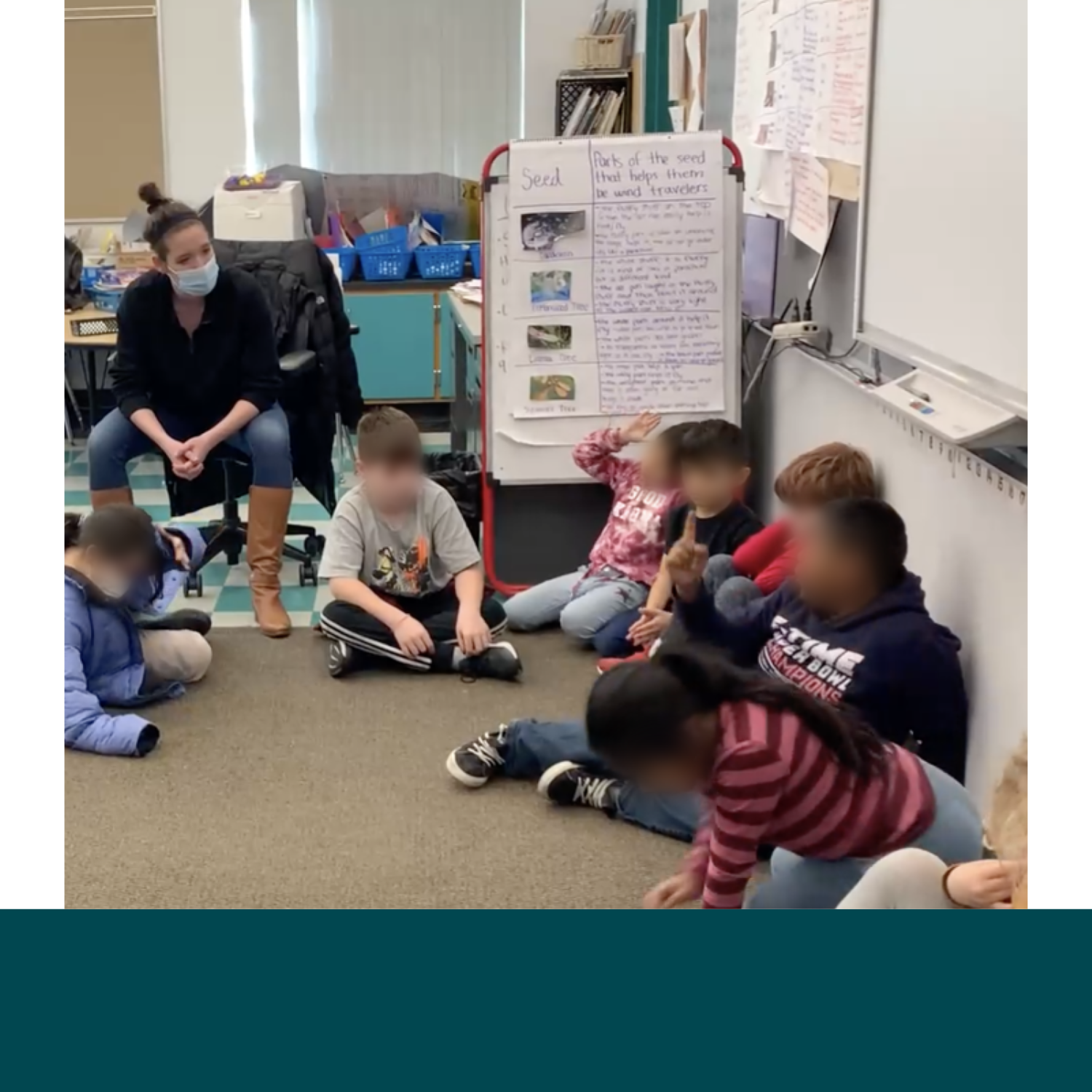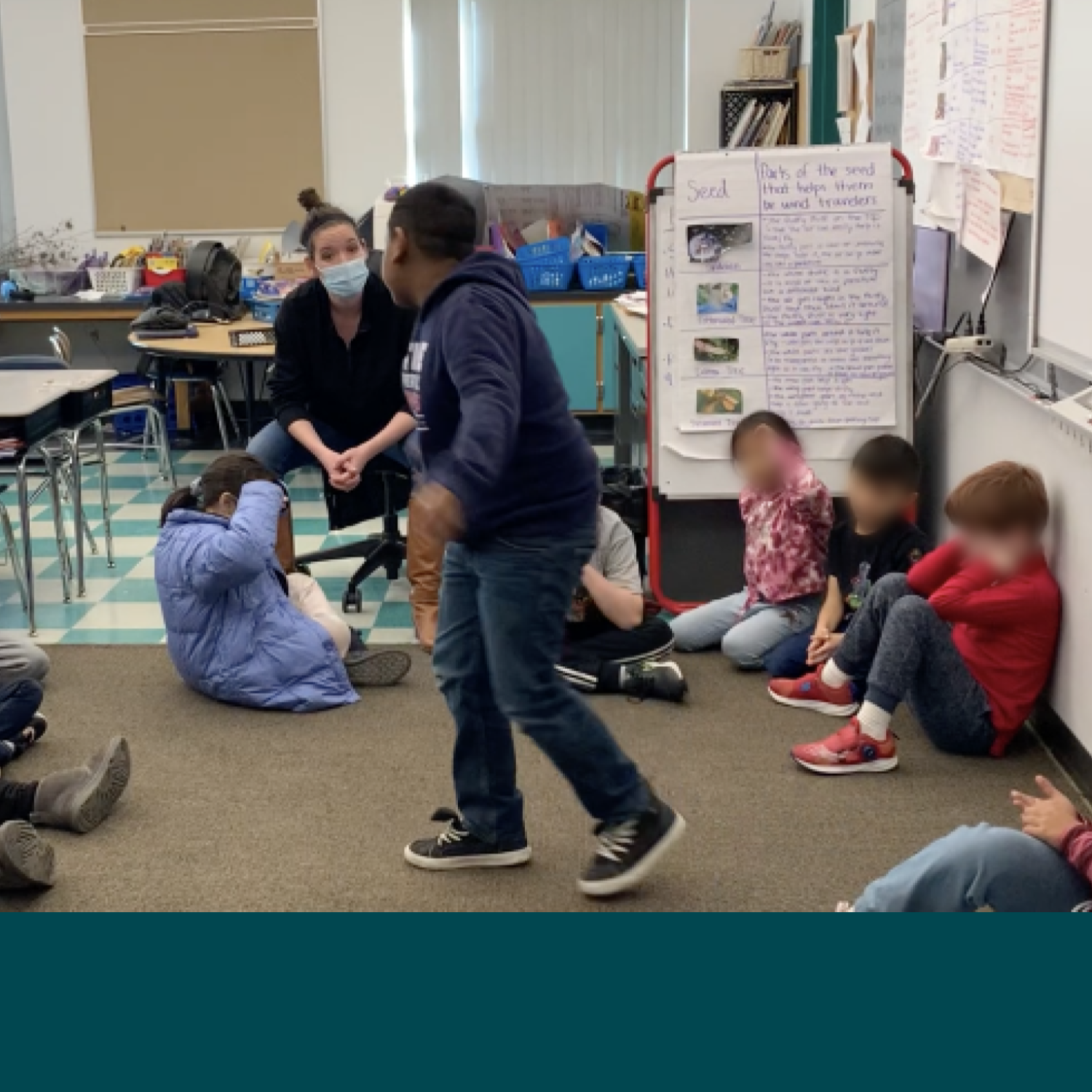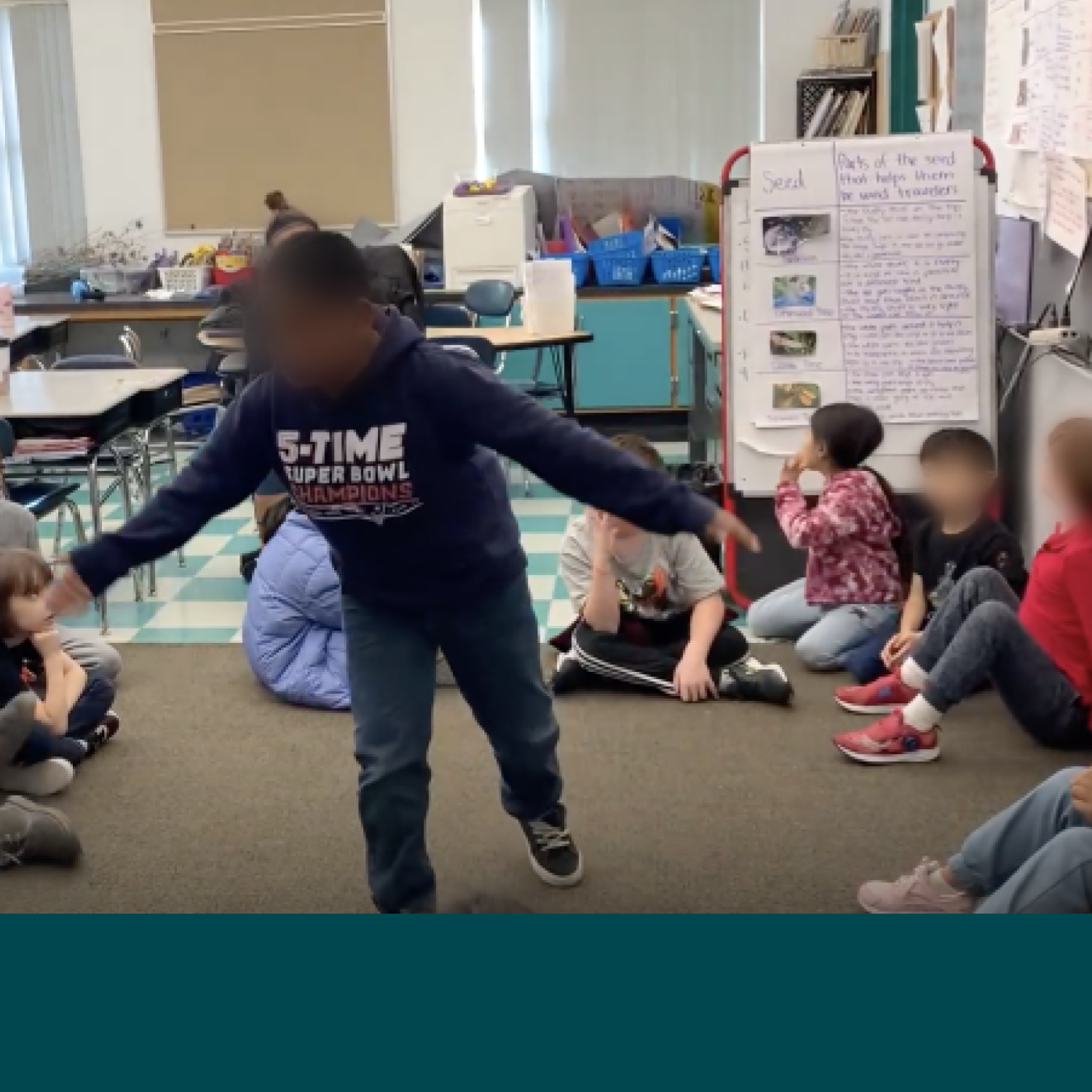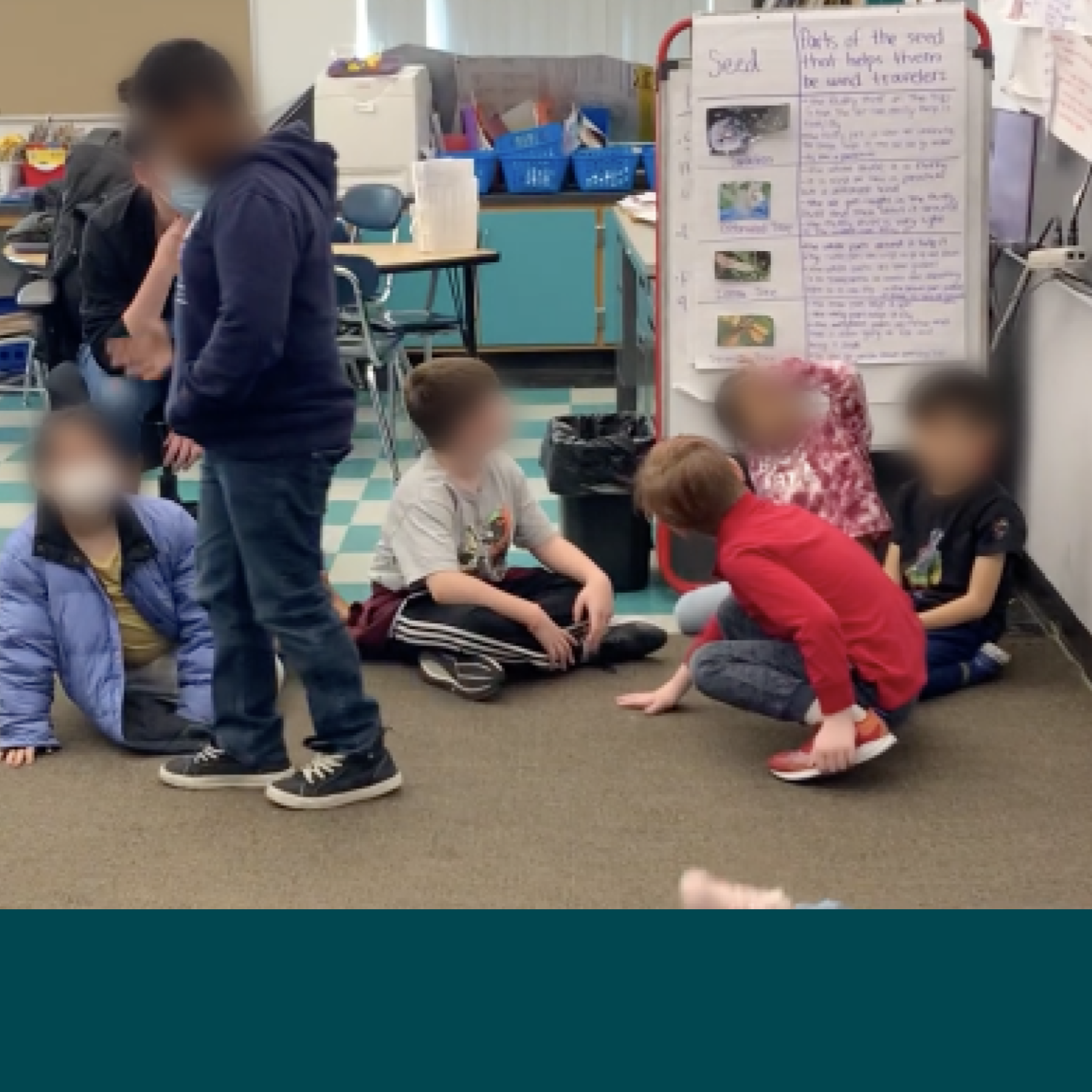“See this?” How Gesture, Investigation Materials, and Visual Resources Can Support Explanation
Case at a Glance
Investigation: Seed Dispersal
Investigation Phase: Developing Explanations
Teaching Practices:
Providing opportunities for children to make conceptual progress through extended engagement with materials to surface and resolve uncertainty
Recognizing and responding to children’s gestures
Positioning student contributions as important for community knowledge development
About the Classroom: This is a second-grade classroom comprising monolingual children whose families indicate they speak English at home and multilingual children whose families indicate they speak Spanish or Portuguese at home. 30% of the students are designated as English Language Learners by the district.
Context: This case occurs within our second-grade Seed Dispersal Investigation, in a larger unit about plant needs and the places plants grow. During the unit, students collect seeds and test to see whether they travel best by wind, water, sticking, or being eaten. After testing their seed to see if it can travel by wind, the maple seed group feels unsure about what claims they can make regarding whether the maple seed is a wind traveler.
Introduction
Children in Lauren’s class are testing whether the seeds they collected outside can travel by wind. Maya’s group is studying the maple seed. They know maple seeds fly outside, yet in their test, the maple seed simply falls. They start to notice differences between the outdoors and the investigation. As they work with these gaps, they develop mechanistic explanations, getting curious about why and how the seed travels by wind. They consider outdoor conditions such as the seed's height and placement on its parent plant, as well as invisible forces such as the wind and gravity. They explore the interplay between the form of the seed, its position when it falls, and the force, direction, and timing of the wind. Throughout their sensemaking, children use gesture and visual and material resources to make conceptual progress and to communicate their thinking.
This case follows one student (Maya). We focus on how working with materials and with gesture supports Maya and her classmates’ conceptual progress: how they come to see new ideas as important, deepen ideas, and connect ideas in mechanistic explanations. We look at how this process occurs as:
Maya works with the maple seed and fan as she makes sense of her investigation results.
Maya and her group share their thinking during a claims and evidence conversation.
Children use gesture to consider factors and mechanisms for seed travel.
Children retest and explore what they think now.
Maya shares her final explanation.
Case Background
Children gather seeds, make initial predictions, and design the fan test
Children in Lauren’s class have collected seeds in their schoolyard, been grouped together to explore a focal seed, and made predictions about how their seeds travel. (Images 1-2 show the maple seed group’s predictions.) They have engaged with a book and video about wind dispersed seeds and used the information from these resources to make a chart showing how some seeds’ structures help them fly (Image 3). Children have also decided to test whether each seed travels by wind by placing it in front of a fan and measuring on chart paper how far it goes.
Children test whether the maple seed travels by wind
Students excitedly gather to see how the maple seed will fare in the fan test (Image 4).
Lauren: Okay, let’s see. Can I please have my maple seed group?
Student: Maple, maple, maple seed!
Lauren: Alena and Paulina, you are the maple seed group. Can you please come and stand up? Alright friends, here we go. We are going to do the maple seed.
Student: The maple seed is going to be the best one.
Lauren: Okay, I’m hearing some predictions. I’m hearing some people think the maple seed will travel far.
Students chanting: Yeah! Go Maple Seed!
Lauren turns on the fan and holds the seed up on a small white board.
Students: Go Maple Seed! (In softer voices)
The maple seed drops to the floor.
Student: It’s not blowing! Seriously?
4. Conducting the fan test for the maple seed.
Uncertainty in Action
Maya works with the maple seed and fan as she makes sense of her investigation results
The maple seed group works together to think about what claims they can make from their test. They are dissatisfied with the results and wonder why the maple seed didn’t perform well. As the conversation progresses, the group tries to describe what conditions would need to be met for the seed to fly. After this conversation they remain unsure about what claims they can make and record their uncertainty in their notebooks (Images 5-6).
-
Maya is experiencing uncertainty about why her test does not represent what happens outside. She has seen the maple seed fly outdoors, so why didn’t it fly in the fan test? And further, what can her test tell her about whether seeds fly at all?
-
Maya’s initial idea is about whether the fan is powerful enough to make the maple seed fly. As she gestures with the seed and fan, she begins incorporating new ideas about the height of the seed when it falls, whether the seed has to be attached to the parent plant, and whether wind is necessary for the seed to fly.
-
Maya begins to think about consequential differences between what happens in her test versus outside in the real world and to begin to explore conditions under which the maple seed could fly. Maybe it has to fall from high up; maybe it needs to be hanging from the parent plant; maybe it doesn’t need the fan at all.
Maya and her group share their thinking during a claims and evidence conversation
Lauren: Do you think that the maple seed is a wind traveler?
Maya: Yes. Actually, not sort of.
Lauren: Talk to me about what your evidence is for why you're saying yes, but mmm sort of.
Maya: Um, like Yonas kinda said something about when we first found these seeds. It goes like very high when it falls from something, not holding from something.
Lauren: Mhm. So, you're saying that Yonas had brought up the idea that it was high and then it falls down?
Maya: Very high. It wasn't just like, like, the wind wasn't just straight (moves arms to the side in a straight line; Image 7). It was like the wind was like. The wind was very high (raises arm up high; Image 8) and also the seed was HANGING on something.
Paulina: If the seed was on a tree, it would fly harder.
Lauren: So, you're curious also about seeing what would happen outside? I want to add a question. Do we need to test it outside?
Maya: Yeah, I'm still like concerned if it would like still fly outside. I feel like it's like not like a seed that can go straight (moves arms in one direction; Image 9). I feel like it's a seed that can go like, down (moves arms down; Image 10).
Lauren: So, it also sounds like Maya, I see you keep acting this out too, and I want to make sure everyone is seeing this. That it sounds like Maya and tell me if I'm right with explaining this. It sounds like what you're proposing to me is this is not a seed that would travel like sideways, similar to what we saw with the milkweed where it went far across (pushes arm directly out in front of her; Image 11). You're saying this is a seed that flies by going down (brings both arms down and then out; Image 12) and moving through the air? Is that what I'm hearing?
Maya nods her head “yes”
What we see …
-
Maya and Paulina use gesture to communicate ideas about qualities of the wind and the seed that make the maple seed fly better outside (the wind comes from all directions; the seed is high and hanging). Maya also uses gesture to make a distinction between the way she thinks the maple seed flies (downward) and the way other seeds may fly (horizontally).
-
Lauren revoices both students’ spoken language and their gestures. In this way, she welcomes gesture as a tool for making meaning and communicating ideas. Lauren also signals that the class is developing ideas as a community by suggesting that their dissatisfaction with the results might warrant doing a new test.
-
Maya and her group are still uncertain about what claim to make. They try to make sense of the differences between the outdoors and indoors that matter for the seed to fly. They propose some factors that might matter: the seed has to be hanging from high up and the wind must move in multiple directions.
Children use gesture to consider factors and mechanisms for dispersal
Below, Ray introduces the idea that there might be a way for the maple seed to travel horizontally as it descends.
Ray: You know how the maple seed falls and it swirls (spins hand in a circle; Image 13). If the wind was like really strong, uh the maple seed when it spins, it might move a little (moves spinning hand sideways to the left; Image 14). To the other direction.
Lauren: So, you're saying. Like you're picturing how it spins around, but then it could spin and get moved to the side? (spins hand on its axis and moves her body to the side; Images 15)
Ray: Yeah.
Eve: What do you all think about that, Fay, Maya, and Paulina? Were you imagining the spinning was important to how it moved as it went down?
Maya and Paulina nod heads
Maya: I feel like I was because if it was spinning (moves hands in spinning motion; Image 16). If it was spinning like very fast. How like that one did at the bottom (points to the sycamore tree seed on the chart; Image 17). It would like go very slow to go down like this one (points to dandelion seed on anchor chart; Image 18). But if you just threw it up (throws hand in the air; Image 19) and then like it was like, not in the shape it was supposed to be to go down, I feel like it wouldn’t fly the correct way.
Lauren: So, you think it’s really important that it starts from a high enough tree to be able to fly the correct way.
Maya: And it has to like. And like start from the wing, like the wing part.
What we see …
-
Ray makes a spinning gesture and moves his hand to the left as he introduces ideas about how the seed might move horizontally as it spins.
Maya repeats the spinning gesture as she discusses how spinning might figure into the flight of the seed. She uses pointing gestures to exemplify the kinds of flight patterns she is describing.
-
Ray introduces spinning as another factor that might matter for how the maple seed flies. He also proposes a way the seed might travel horizontally.
Maya takes in the idea about spinning and adds new thinking around how the seed's spinning slows it down and how the seed must be in a particular orientation to fall correctly.
Children retest and explore what they think now
Before the conversation below, the class gathers outside to watch the maple seed dropped from a second-story window (Image 20). After this new test, they come together to discuss their observations and engage in explanatory work. Lauren begins the discussion by asking students what they saw happening when the seed was dropped from the window.
Kam: Um, in my opinion, I think like when the um seed fell down (brings hand to eye level and then drops it down; Image 21), it was going left and right, up and down (fingers pointing left, right, up, down; Image 22). It was some sort of gliding (stands up to demonstrate gliding; Image 23). And then um it was gliding a little bit, so it was like this seed (points to the liana seed; Image 24). Then the seed went like this and it starts going up and down (gestures with body how the seed glided up and down; Image 25). And so it’s just like the sycamore tree, so it just goes like that (uses hands to mime a seed falling down; Image 26).
Lauren: So you were noticing too, you saw it kind of gliding and also moving in different directions while it was traveling?
Kam: Yeah.
Lauren: Luisa?
Luisa: The Maple seed. Um. I think that I will say yes that it can travel by wind because um, currently we saw that it could like, the maple seed can like might pick up the seed and then actually putting it somewhere traveling somewhere.
Maya’s final explanation
At the end of the investigations, Maya's group made a poster about how the maple seed might get to a new location (Image 27). Maya also talked to an interviewer about her thoughts. In these tasks, she incorporated ideas she and her classmates had surfaced through gestures, interaction with visual and material resources, and class discussion.
Below is an excerpt from Maya’s interview:
Interviewer: What about your seed helps it travel by wind?
Maya: The wing and the seed. Because the seed helps it lower it down and the wing helps it fly to get up and down.
Interviewer: Show or tell me what is happening with the seed and up and down that makes it get to travel?
Maya: There’s this stem on the seed and I think it very helps the wing and it goes around the seed.
Interviewer: What happened when you tested how the seed travels in front of the fan?
Maya: I thought it would fly good but what I noticed from our seed is it's not like a traveler, it’s more of a one that can get to the ground. Our seed doesn’t travel, it travels up and down.
What we see …
-
Kam uses both visual and embodied resources to demonstrate to his class how the maple seed flies. He points to both the sycamore and liana seeds and combines their flight patterns to explain how the maple seed seemed both to glide and to move up and down.
-
Lauren connects Kam's demonstration to others' ideas by asking whether his reenactment is meant to echo what others have also noticed.
-
Working from his observations and his classmates’ ideas, Kam uses his body to illustrate how the maple seed moves up and down while making horizontal progress.
27. Maya’s Final Poster
What we see…
-
Maya’s final thoughts integrate factors she and her classmates have identified as being crucial to how the seed can travel by wind (falling from high, importance of the wing, spinning, flight path). She poses a new wondering about how exactly the stem part (the rigid backbone of the wing) helps the seed to fly.
Reflection
This case illustrates the role of investigation materials, visual resources, and gesture in supporting children to develop explanations. By providing students opportunities for extended engagement with materials and welcoming their use of gesture, teachers give students multiple resources to build and communicate explanations.
We encourage you to reflect on your teaching practices in light of your learning from this case:
Where might I provide opportunities for repeated work with investigation materials to support students' explanatory thinking?
Am I able to recognize children’s developing explanations using their talk, gesture, and work with materials? What can I do to build my capacity to see the science in children’s activity?
How do I – and how can I – support children to access and use a variety of resources, including gesture and object-handling, for both sensemaking and communication during science?


